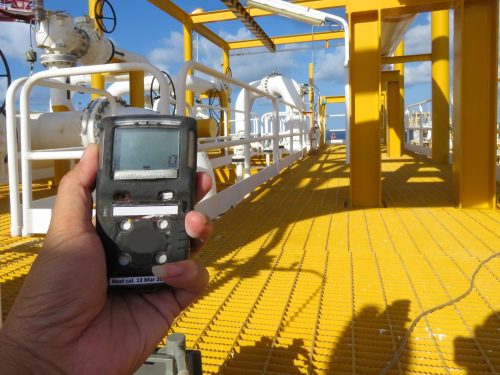In our previous post, The Environmental and Economic Benefits of Anaerobic Digestion, we discussed the numerous benefits of utilizing anaerobic digestion technology. However, the by-products of the anaerobic digestion process and oil and gas refinery processes warrant further discussion, namely hydrogen sulfide (H2S) and the importance of its removal from the biogas produced. Regulatory compliance requirements necessitate H2S removal for biogas operations, and its removal is important for several reasons.
What Is H2S?
Hydrogen sulfide is a toxic gas produced by sulfate-reducing bacteria under anaerobic conditions. It presents multiple problems in the anaerobic digestion process for several reasons. Aside from contributing to foul odors, it also contributes to sulfur dioxide emissions (SO2) emissions when combusted. In addition, H2S creates a corrosive environment when moisture is present and can compromise the quality and effectiveness of fuel delivery systems.
What’s That Smell?
Hydrogen sulfide is a colorless, flammable gas often referred to as “sewer gas” because it is produced by the breakdown of waste material. Despite not being visible, H2S can certainly be identified by its smell – the smell of rotten eggs.
What’s interesting is that hydrogen sulfide can be detected by its smell when present in low levels, but may go unnoticed at higher levels. Therefore, H2S gas detectors are commonly found in industrial operations — such as petroleum and natural gas drilling sites and refineries, landfills, wastewater treatment plants, and food and beverage processing facilities — where the risk of exposure is present.
Harmful To Humans
Regardless of the levels of H2S present, it is harmful to humans, and mitigation and elimination systems should be present in operations where the risk of exposure is present. Aside from being highly flammable and explosive, exposure to low concentrations of H2S can irritate the eyes, nose, throat and respiratory system, while repeated exposure may cause eye inflammation, headache, fatigue, irritability, insomnia, digestive disturbances and weight loss. High concentrations can cause shock, convulsions, inability to breathe, extremely rapid unconsciousness, coma and death.
And The Environment Too
The deleterious effects of H2S not only affect humans and animals. They extend to the environment as well. H2S is an environmental pollutant in and of itself. However, when combusted, it emits sulfur dioxide (SO2).
High concentrations of SO2 are harmful to trees and plants, damaging foliage and stunting growth. In addition, SO2 contributes to acid rain and harms fragile ecosystems. SO2 also reacts with other compounds in the atmosphere, forming fine particles that create a haze, reduce visibility and deposit on structures, including statues and monuments, staining and damaging them.
Clean Biogas With MV Technologies Systems
Obviously, there are many benefits to H2S removal: maintaining compliance, helping the environment, keeping people safe and producing clean biogas. MV Technologies has several solutions to achieve this. Whether it is a new H2SPlus™ system, SulfAx™ system or an evaluation of an existing system to see if operational improvements can be made, MV can help. MV can also supply replacement media and nets for an existing system. Contact us today to learn more.

